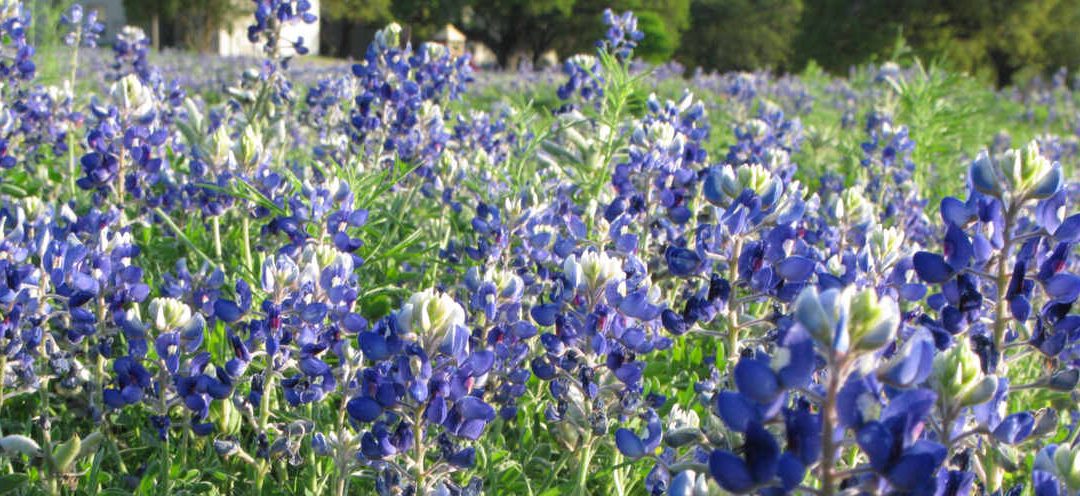Austinites keep it weird with our local celebrities, our infamous murals, and our love of nature. One way we show our love of nature is by growing flowers, shrubs, and trees native to the area. If you need ideas, we have 15 of the best native plants that are perfect for your Austin landscape.
But why should you choose native plants for your landscape? Here are a few of the benefits:
- They’re easier to care for than non-natives because they naturally thrive in Austin’s climate.
- They attract beneficial wildlife, such as bees, butterflies, and birds.
- They use fewer pesticides and fertilizers than non-natives, reducing chemical pollutants that harm local ecosystems.
In this article, we’ll cover:
- Blue Mistflower
- Desert Willow
- Flame Acanthus
- Flameleaf Sumac
- Hill Country Penstemon
- Lacey Oak
- Missouri Evening Primrose
- Prairie Verbena
- Rock Rose
- Roughleaf Dogwood
- Texas Red Yucca
- Texas Sage
- Texas Wisteria
- Winecup Flower
- Wright’s Purple Skullcap
- How to Choose Native Plants for Your Austin Landscape
- FAQ for Austin Native Plants
- Where to Find Native Plants in Austin
15 Native Plants for Your Austin Yard
1. Blue Mistflower (Conoclinium Coelestinum)
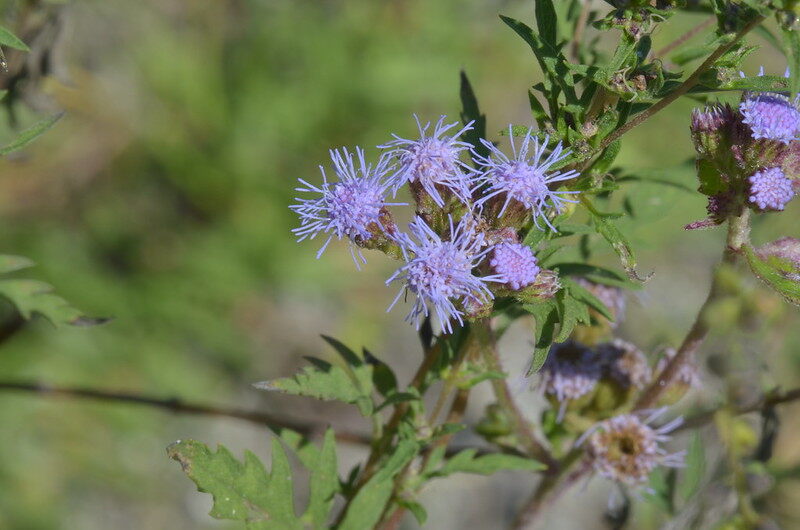
Photo Credit: jimduggan24 / Flickr / CC BY 2.0
The blue mistflower is an eye-catching wildflower famous for its bluish-purple fuzzy flowers. The nectar-producing blooms grow in a nearly-flat cluster at the top of the plant. The bright blooms attract bees and butterflies and stand out against the dark-green leaves. You can check them out at Zilker’s Botanical Garden.
Uniquely beautiful, the blue mistflower blooms in late summer and fall. In the wild, they’re often found in stream banks, wet meadows, and ditches. For landscaping, they’re perfect for borders, groundcover, and rain gardens. Usually sown from seeds, the blue mistflower is fast growing and needs to be trimmed and pruned to prevent it from crowding out your other plants.
Growth habit: Wildflower
USDA Hardiness zones: 5-10
Mature size: Up to 3 feet
Duration: Perennial
Foliage: Deciduous
Sunlight needs: Full sun, partial shade
Soil preferences: Moist loam, sand, or clay
Water needs: Medium
Potential hazards: Non-toxic; invasive if left unchecked; attracts bees
2. Desert Willow (Chilopsis Linearis)
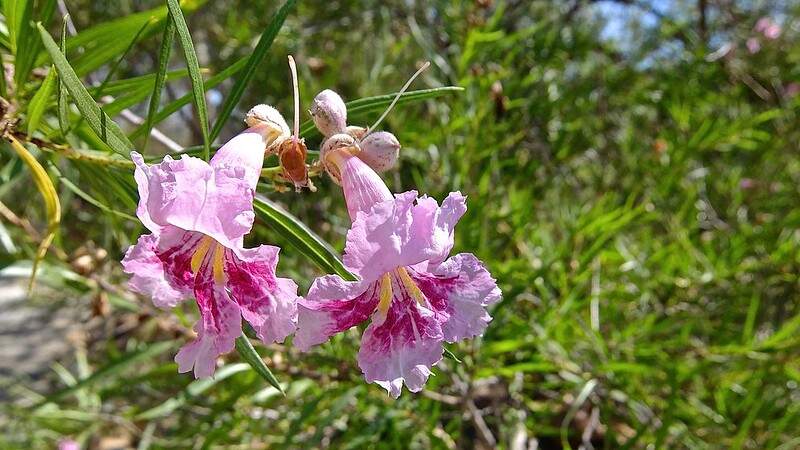
Photo Credit: The Marmot / Flickr / CC BY 2.0
The desert willow resembles a willow but isn’t actually part of the willow family, it’s a member of the bignonia family. With a slew of sweet-smelling pink, white, or purple flowers, butterflies, hummingbirds, and bees flock to the desert willow’s nectar-rich blooms. This small, fast-growing ornamental tree is drought resistant and excellent for erosion control. It also makes a great focal point for any yard.
The desert willow requires minimal trimming and is known as a set-it-and-forget-it tree. However, it can be pruned into a large shrub if that’s the aesthetic you’re looking for. Desert willow is popular for xeriscaping or limestone-heavy soil because of its low water needs. You can see them in bloom at Texas Parks and Wildlife Department in late spring, summer, and early fall.
Growth habit: Tree
USDA hardiness zone: 7-11
Mature size: Up to 40 feet tall
Duration: Perennial
Foliage: Deciduous
Sunlight needs: Full sun
Soil preferences: Well-drained limestone soils are preferred, but also does well in sands, loams, clays, caliches, granitic, and rocky soils
Water needs: Low; water occasionally if no rain after 30 days
Potential hazards: Non-toxic; susceptible to Alterneria leaf spot; attracts wildlife and bees
3. Flame Acanthus (Anisacanthus Quadrifidus var. Wrightii)
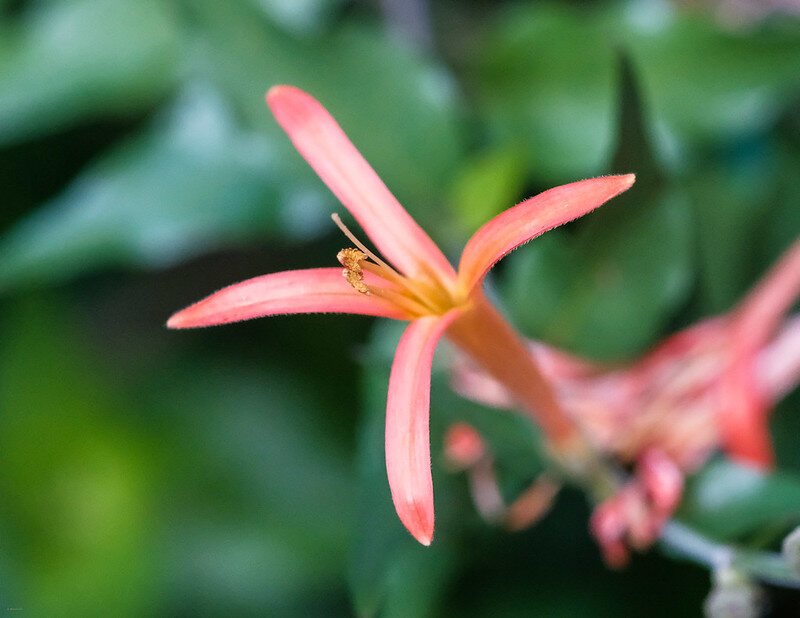
Photo Credit: Earl McGehee / Flickr / CC BY-SA 2.0
The flame acanthus is a Texas native with many nicknames, including Hummingbird Bush, Texas Firecracker Plant, Mexican Flame, and more. As one of its nicknames suggests, hummingbirPds love the nectar that flows from the reddish-orange, tubular flowers. It also attracts bees and birds but is deer-resistant.
Preferring full sun and low moisture, the flame acanthus is an ideal choice for xeriscaping, perennial gardens, and patio pots. Shockingly, this plant can live for more than 30 years. While you will need to control the shrub’s growth, it only requires trimming after the flowers bloom.
Growth habit: Shrub
USDA hardiness zone: 7-10
Mature size: 3-5 feet
Duration: Perennial
Foliage: Deciduous
Sunlight needs: Full sun or partial shade
Soil preferences: Adaptable to many soils but prefers well-drained sand, loam, clay, caliche, limestone
Water needs: Low
Potential hazards: Non-toxic; reseeds profusely; attracts bees
4. Flameleaf Sumac (Rhus Lanceolata)
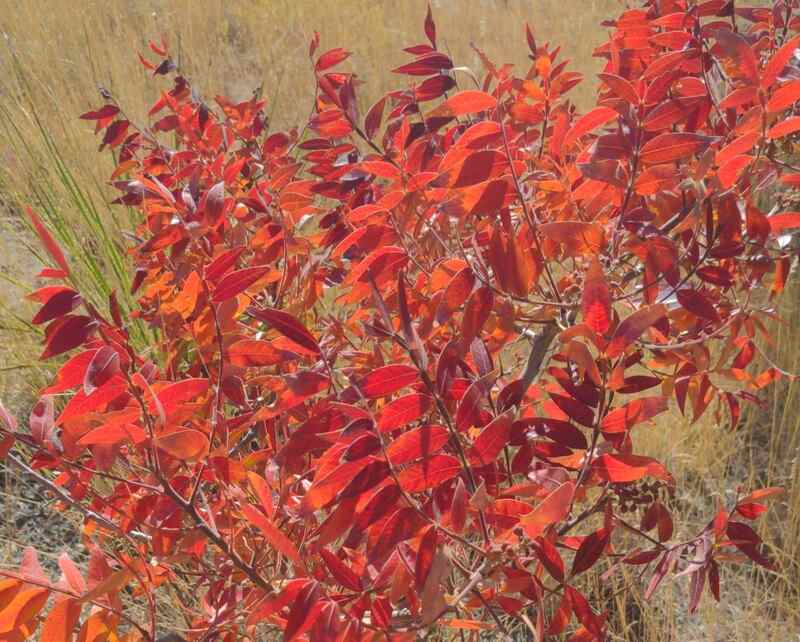
Photo Credit: Mike Tilley / Wikimedia Commons / CC BY-SA 4.0
Also called the Texan sumac and the prairie flameleaf sumac, the flameleaf sumac puts on a fiery show of fire-engine-red leaves in the fall, hence the name. This native shrub is also eye-catching in bloom with its tiny white flowers. The red berries that follow the blooms can be steeped for a tasty tea rich in vitamin A, vitamin C, and antioxidants.
This tree is not a skin irritant, unlike the similar-sounding, rash-inducing poison sumac. Flameleaf sumac is also a haven for many species, like birds, bees, and small animals. It’s also highly resistant to both pests and diseases, except Verticillium wilt, a fungal disease. This ornamental beauty is a showstopper in any Austin yard.
Growth habit: Tree
USDA hardiness zone: 6-8
Mature size: Usually 12-15 feet, but can grow up to 30 feet
Duration: Perennial
Foliage: Deciduous
Sunlight needs: Full sun
Soil preferences: Rocky, calcareous, well-drained limestone soils, including clays, loams, and sands.
Water needs: Low-medium
Potential hazards: Non-toxic; potential to be invasive because it seeds itself; susceptible to Verticillium wilt
5. Hill Country Penstemon (Penstemon Triflorus)
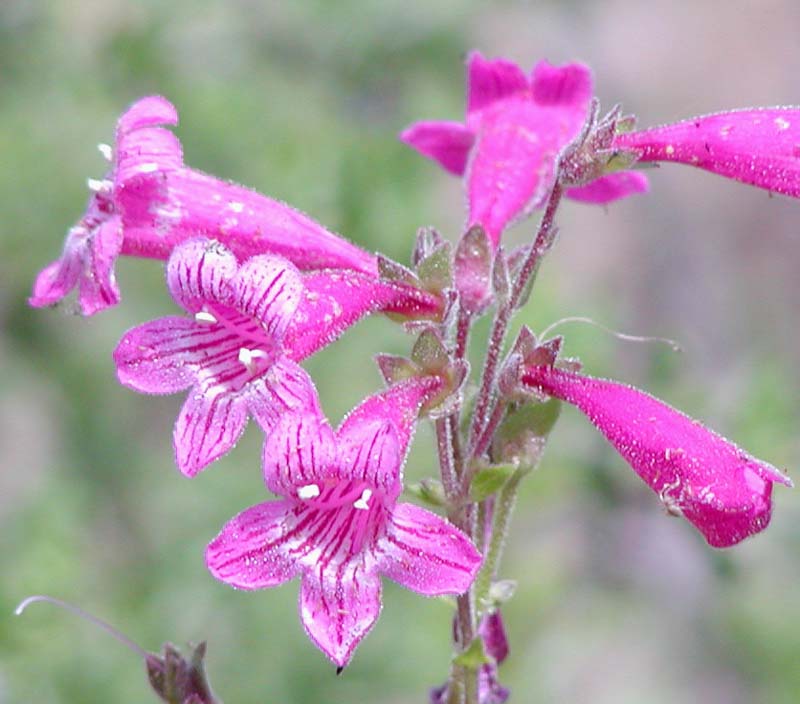
Photo Credit: Stan Shebs / Wikimedia Commons / CC BY-SA 3.0
Sometimes called the Hill Country beardtongue or the scarlet beardtongue, the Hill Country penstemon is an Edwards Plateau native. The vibrant pink or red tube-shaped flowers stand out against the dark green oval leaves. The hairy stamen gives the showy flower the nickname “beardtongue.” This ornamental plant is perfect for perennial gardens and cut flowers.
During its growing season, this nectar-rich plant attracts hummingbirds, butterflies, bees, and deer. While the Hill Country penstemon is relatively short, the flowers are big in comparison, about 2 inches long. You can see the flowers in bloom in spring and early summer at the Lady Bird Johnson Wildflower Center.
Growth habit: Flower
USDA hardiness zone: 5-8
Mature size: Up to 2 feet tall; 1.5 feet wide
Duration: Perennial
Foliage: Deciduous
Sunlight needs: Full sun
Soil preferences: Dry, limestone-based soils: sandy, sandy loam, medium loam, clay loam, clay.
Water needs: Low; water if 3 to 4 weeks without rain
Potential hazards: Non-toxic; susceptible to brown spot; attracts deer and bees
6. Lacey Oak (Quercus Laceyi)
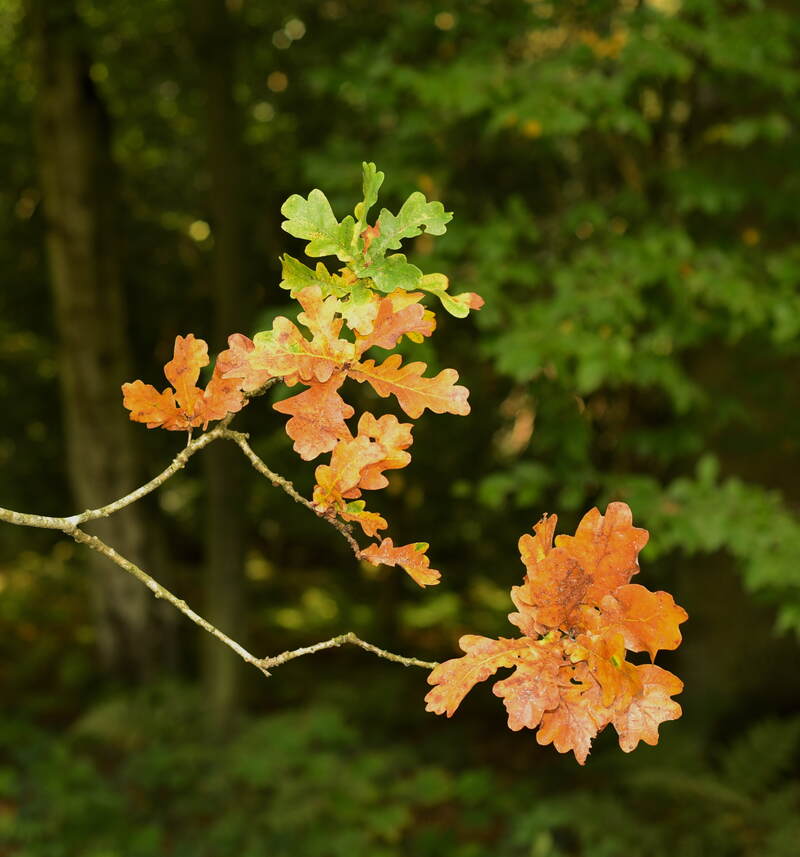
Photo Credit: Pxfuel
Native to central Texas, lacey oak trees are found in many Austin area landscapes. They’re named after Howard Lacey, who first collected specimens on his property about two hours west of Austin. The rounded-toothed leaves are peach-colored in spring and fall. In the summer, they take on a smokey grayish-green color. Lacey oaks produce yellow flowers that turn into acorns.
Because lacey oak is resistant to wilt, they’re often preferred over live oak and red oak. The medium-sized tree is an excellent food source and shelter for small mammals and birds. Fun fact: The largest known lacey oak grows just next door in Blanco County. It stands just under 60 feet tall, and the trunk is just over 3 feet in diameter. Wow!
Growth habit: Tree
USDA hardiness zone: 7-9
Mature size: Up to 60 feet
Duration: Perennial
Foliage: Deciduous
Sunlight needs: Sun or partial shade
Soil preferences: Dry, limestone or rocky soils
Water needs: Very low
Potential hazards: Non-toxic; attracts deer; susceptible to oak phylloxera insects
7. Missouri Evening Primrose (Oenothera Macrocarpa)
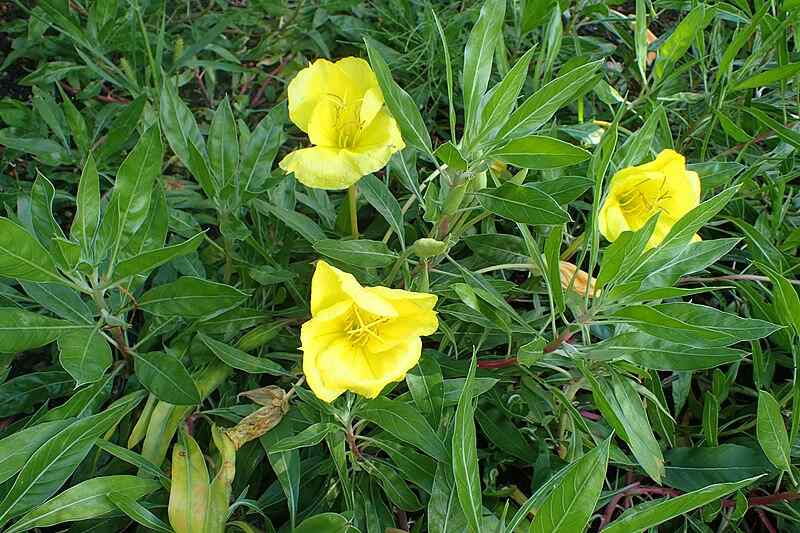
Photo Credit: Kenraiz / Wikimedia Commons / CC BY-SA 4.0
Despite its name, Missouri primrose is native to the entire south-central United States, including Texas. Even though it has bright yellow elongated flowers, it’s primarily nocturnal, meaning it blooms at night and closes in the day. The Missouri evening primrose is a nectar source that mostly attracts hawk moths but also native bees and hummingbirds.
The showy plant grows easily from seed or stem cuttings. Considered a trailing plant, the Missouri evening primrose is often grown in poor soil gardens, rock gardens, or containers. Remove dead blooms and cut back damaged leaves to promote healthy growth. You can check out these stunning, large, four-petaled blooms at the Lady Bird Johnson Wildflower Center.
Growth habit: Herb
USDA hardiness zone: 3-8
Mature size: 8-10 inches
Duration: Perennial
Foliage: Deciduous
Sunlight needs: Full sun
Soil preferences: Dry, rocky, gravelly, or sandy soils: calcareous, sandy, limestone-based, sandy Loam, medium Loam
Water needs: Low
Potential hazards: Non-toxic; susceptible to root rot
8. Prairie Verbena (Glandularia Bipinnatifida)

Native to south-central United States and Central America, prairie verbena is found in grassy areas, along roadsides, trails, and landscapes all over Texas, including Austin. In fact, they’re on display at the Texas Parks and Wildlife Department, the Austin chapter of the Native Plant Society of Texas, and the Lady Bird Johnson Wildlife Center.
Also called “moradilla,” Spanish for “little purple one,” this beautiful plant puts on a show with clusters of violet, purple, or pink flowers against dark green, unusual-shaped leaves (like large, elongated parsley leaves). This long-blooming (March through October), nectar-producing flower attracts butterflies and birds with its sweet fragrance but is deer resistant. The creeping prairie verbena provides superb groundcover in most gardens.
Growth habit: Shrub
USDA hardiness zone: 4-9
Mature size: Up to 16 inches tall
Duration: Perennial
Foliage: Deciduous
Sunlight needs: Partial shade
Soil preferences: Well-drained sand, loam, clay, caliche, and limestone
Water needs: Low-medium
Potential hazards: Non-toxic; susceptible to Powdery Mildew
9. Rock Rose (Pavonia Lasiopetala)
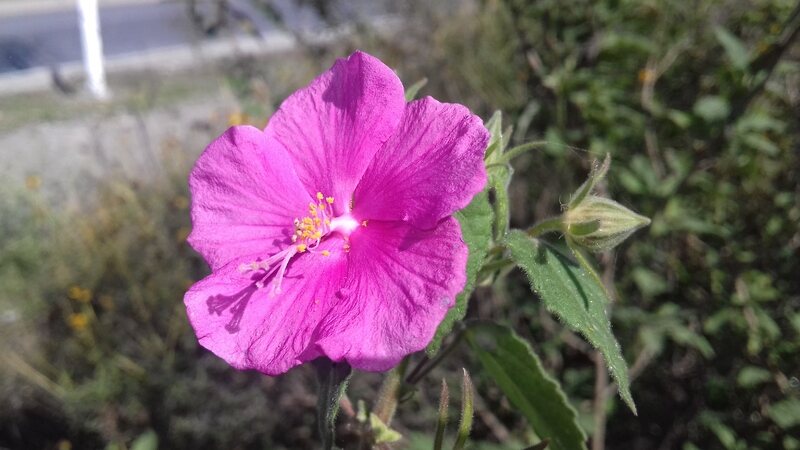
Photo Credit: Pxhere
Native to the Edwards Plateau through the Rio Grande and into Mexico, the rock rose is a popular choice for Austin landscapes and perennial gardens due to its high heat tolerance and beautiful blooms. The showy, paper-thin, pink or yellow flowers contrast exquisitely with the coarsely toothed, dark green leaves. To see it up close, take a stroll through Zilker’s Botanical Gardens.
Rock rose is an easily grown shrub that needs to be cut back before winter to encourage bushy, compact growth. The nectar-rich flowers attract hummingbirds, nectar moths, and butterflies. The flowers only bloom for a short time before falling off to make room for the next one, but the flowers bloom spring, summer, and fall. Surprisingly, the rock rose fragrance is more prominent in the foliage than the bloom.
Growth habit: Shrub
USDA hardiness zone: 8-13
Mature size: Up to 4 feet
Duration: Perennial
Foliage: Evergreen
Sunlight needs: Full sun or partial shade
Soil preferences: Prefers dry, well-drained, rocky or limestone soils: caliche, sandy, clay, and loam (sandy loam, medium loam, clay loam)
Water needs: Low
Potential hazards: Non-toxic; susceptible to mildew and gray mold (also known as botrytis blight)
10. Roughleaf Dogwood (Cornus Drummondii)
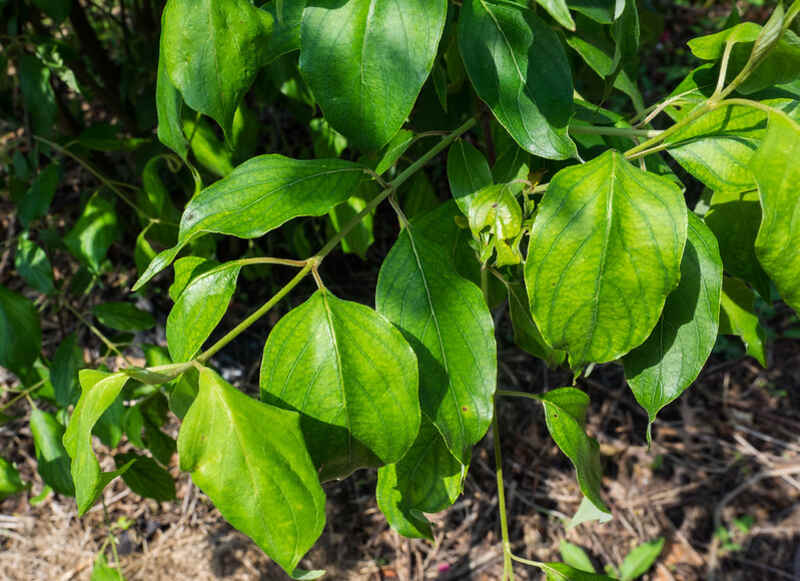
Photo Credit: F. D. Richards / Flickr / CC BY-SA 2.0
The roughleaf dogwood is an adaptable tree native to the central United States west of the Mississippi and Ontario but now flourishes amid the eastern U.S. too. The large clusters of creamy white flowers turn into bunches of fleshy white berries in late fall. The roughleaf dogwood gets its name from the hairy upper part of its oval leaf.
The roughleaf dogwood blooms attract nectar insects like butterflies and native bees. Small birds feast on the berries while nesting amongst the branches. The tree’s also great for erosion control. While the roughleaf dogwood grows throughout Austin landscapes, it’s also featured at the Lady Bird Johnson Wildflower Center.
Growth habit: Tree
USDA hardiness zone: 5-8
Mature size: Up to 20 feet
Duration: Perennial
Foliage: Deciduous
Sunlight needs: Partial shade, shade
Soil preferences: Dry to moist, alkaline soils. Limestone-based, sandy, sandy loam, medium loam, clay loam, clay, acid-based, calcareous
Water needs: Low
Potential hazards: Non-toxic; susceptible to several pests and diseases, but they don’t typically affect the tree’s growth
11. Texas Red Yucca (Hesperaloe Parviflora)
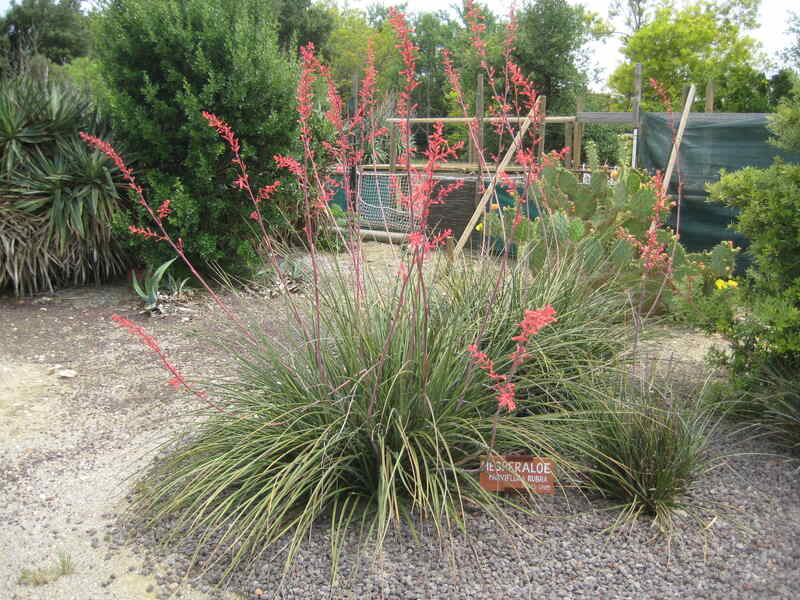
Photo Credit: Sylenius / Wikimedia Commons / CC BY-SA 3.0
Also called the hummingbird yucca or the false yucca, the Texas red yucca isn’t actually part of the yucca family. It does resemble a yucca with its long, thin, grasslike leaves and tall wand-like flower stems, but it’s classified as a succulent. Native to Texas and Northern Mexico, the Texas red yucca is heat, cold, and drought tolerant.
Hummingbirds love the coral, yellow, or red flowers, but so do deer. The dark, olive-green leaves stay green all year, while the flowers bloom from February to July. This evergreen plant is ideal for rock gardens or xeriscaping but thrives in most well-draining soils. If you want to see this beautiful plant firsthand, check it out at the Lady Bird Johnson Wildlife Center.
Plant type: Succulent
USDA hardiness zone: 5-10
Growth habit: Succulent
Mature size: 3-5 feet tall; 2-4 feet wide
Duration: Perennial
Foliage: Evergreen
Sunlight needs: Full sun
Soil preferences: Dry, well-drained sand, loam, caliche, limestone.
Water needs: Very low; no water once established, but occasional watering might be needed if no rainfall after 30 days
Potential hazards: Raw plant is toxic to humans and dogs, but cooked Texas Red Yucca is edible.
12. Texas Sage (Leucophyllum Frutescens)
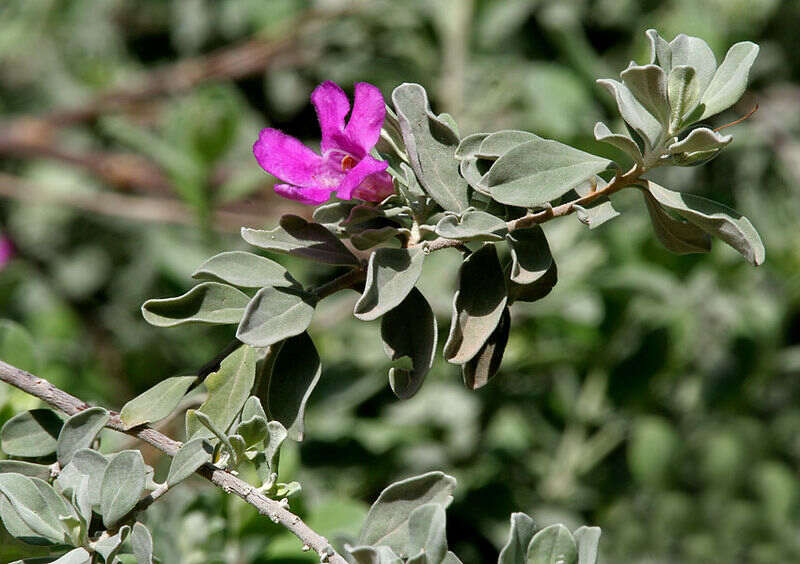
Photo Credit: J.M. Garg / Wikimedia Commons / CC BY 3.0
Native to Texas and Northern Mexico, the Texas sage has several nicknames, including Barometer Bush and Texas Silverleaf. This beautiful shrub gets the “silver” part of its nickname from its leaves that are densely covered in stellate (silvery hairs). Use it in rock gardens or as a hedge.
The Texas sage leaves give the shrub a gray-silvery appearance, which enhances the white, pink, purple, or violet blooms. The year-round blooming flowers are about an inch wide and almost bell-shaped. The flowers bloom in periods of rain or high humidity, hence the nickname “Barometer Bush.” The nectar-producing blooms attract butterflies to your yard.
Growth habit: Shrub
USDA hardiness zone: 8-10
Mature size: Usually 2-5 feet, but can grow up to 10 feet
Duration: Perennial
Foliage: Evergreen
Sunlight needs: Full sun, partial shade
Soil preferences: Dry, well-drained, rocky or limestone-based soils
Water needs: Low to very low; water if 3-4 weeks without rain
Potential hazards: Non-toxic; susceptible to Cotton Root Rot
13. Texas Wisteria (Wisteria Frutescens)
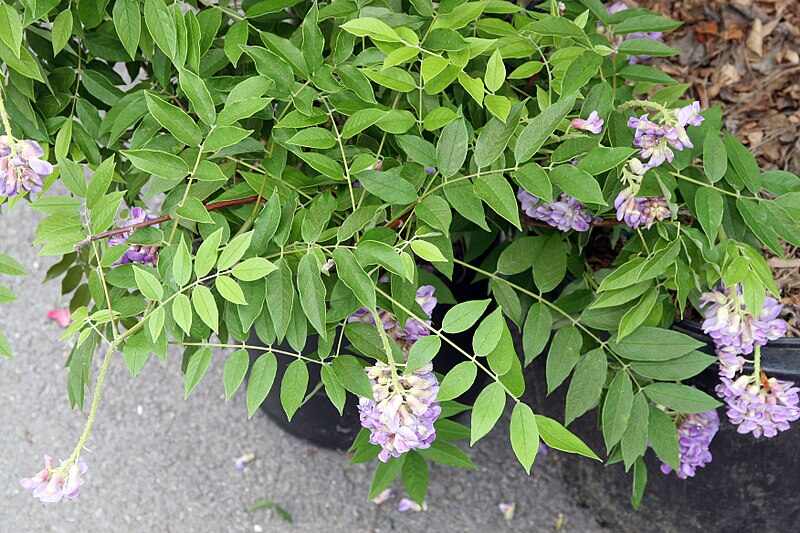
Photo Credit: David J. Stang / Wikimedia Commons / CC BY-SA 4.0
Also called the American wisteria, the Texas wisteria is native to the entire eastern half and south-central United States, including Texas. This woody, climbing vine usually produces long clusters (6-8 inches) of purple flowers in early summer. The flowers can also be pink, blue, or white. The flowers turn into large pea pods that are not edible, so keep pets away.
The fragrant flowers produce nectar and attract butterflies and moths. While not as aggressive as the Asian cousin, Texas wisteria can crowd out other plants and is best grown on an arbor or trellis. The Lady Bird Johnson Wildflower Center proudly displays Texas Wisteria as part of its collection.
Growth habit: Flowering vine
Mature size: 25-30 feet tall; 3-6 feet wide
Duration: Perennial
Foliage: Deciduous
Sunlight needs: Full sun, partial shade, shade
Soil preferences: Rich, moist to mesic, neutral to slightly acidic soils: sandy, sandy loam, medium loam, clay loam, and clay
Water needs: Medium; if there is no rainfall, water every 2-3 weeks
Potential hazards: Toxic to pets and humans, except flowers are edible
14. Winecup Flower (Callirhoe Involucrata)
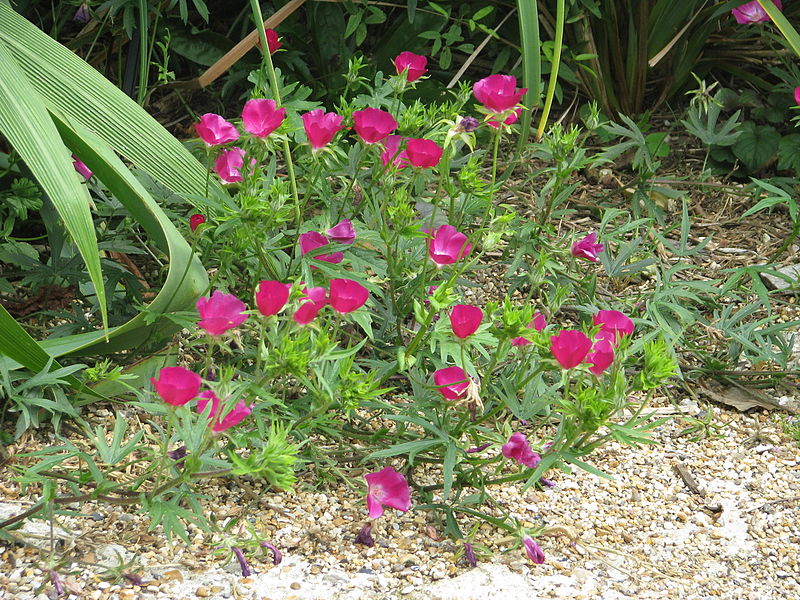
Photo Credit: peganum / Wikimedia Commons / CC BY-SA 2.0
The winecup flower is prevalent throughout most of the United States and is one of the most common wild herbs in Texas. Its purple, white, or pink flowers bloom in spring and early summer. The winecup flower is used as a flower bed cover, in hanging baskets, or draping over a wall.
The nectar-rich flowers attract bees, butterflies, and deer. The plant’s roots can be used for medicinal purposes, including for head colds and pain. The chalice-shaped flower blooms most of the year except when it goes dormant in late summer. You can see this plant throughout Austin fields, landscapes, and at the Lady Bird Johnson Wildflower Center.
Growth habit: Herb
USDA hardiness zone: 4-8
Mature size: 8-12 inches tall spreading to 3 feet
Duration: Perennial
Foliage: Evergreen, semi-evergreen
Sunlight needs: Full sun, partial shade
Soil preferences: Well-drained, calcareous, acid-based, rocky, gravelly and sandy soils: clay, clay loam, medium loam, sandy loam
Water needs: Medium
Potential hazards: Non-toxic; susceptible to pests or diseases if the soil is too wet when it may contract root or crown rot
15. Wright’s Purple Skullcap (Scutellaria Wrightii)
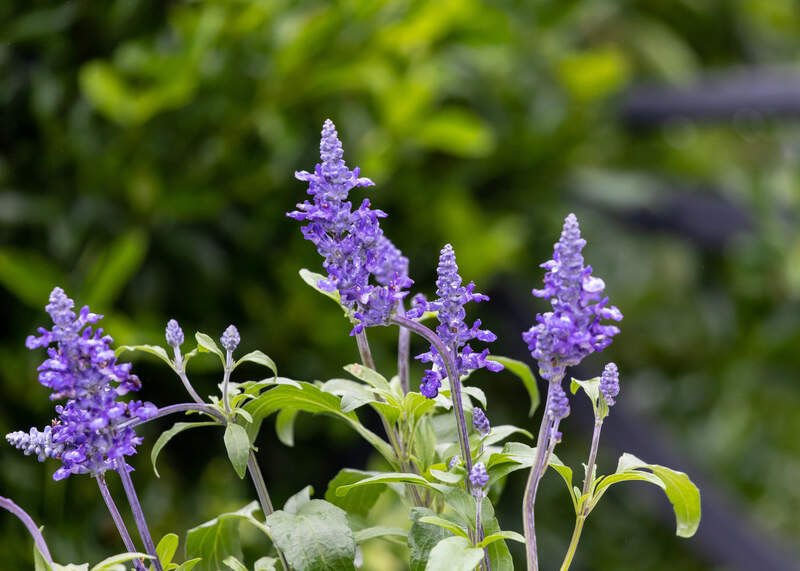
Photo Credit: Istock
Native to Texas and Oklahoma, Wright’s purple skullcap is also called shrubby skullcap or bushy skullcap. Named after the famous botanist Charles Wright, Wright’s purple skullcap is a popular choice for Austin landscape due to its drought and heat resistance. The small, violet, cone-shaped, nectar-rich flowers attract pollinators like bees, butterflies, and hummingbirds.
Wright’s purple skullcap blooms in spring and summer, attracting deer. If you want to check out this lovely, hardy shrub, you can see it on display throughout Texas, including Texas Discovery Garden in Dallas, Jacob’s Well Natural Area in Wimberly, and right here in Austin at the Lady Bird Johnson Wildflower Center.
Growth habit: Shrub
USDA hardiness zone: 7-9
Mature size: 6-10 inches
Duration: Perennial
Foliage: Evergreen
Sunlight needs: Full sun, partial shade
Soil preferences: Well-drained sand, loam, chalk, limestone
Water needs: Low
Potential hazards: Non-toxic; highly pest resistant; susceptible to rot if the soil is too wet
How to Choose Native Plants for Your Austin Landscape
Anyone who lives in Austin knows that our city is much different than the rest of the state. Texas has seven geographical regions, so not all Texas-native plants are good choices for Austin.
Just because a plant is an Austin native doesn’t mean it will do well in your landscape. Make sure the plant you choose is compatible with your yard’s microclimate, such as soil type and sun exposure.
Austin’s soil consists of three ecoregions, each with different soil types: the Edwards Plateau, the Blackland Prairies, and the Post Oak Savannah Floodplains.
Edwards Plateau
- Exposed limestone
- Soil contains large amounts of crumbled limestone
- Clay soil prevalent
- Prone to runoff
Blackland Prairie
- Wet soil is tough to remove from tools
- Soil holds its shape in your hand, feels like pottery clay
- Soil profile is very deep, solid rock rarely found
- Dried-out areas resemble concrete
Post Oak Savannah Floodplains
- Terrain is relatively flat, commonly found along river and creek bottoms
- Soil is loose, drains extremely fast, and has difficulty retaining moisture
- Prone to flooding
Look into which soil type is found in your yard to help you determine the best plants for your landscape. While researching, discover excellent low-maintenance landscape ideas and the best grass types for your Austin lawn.
FAQ for Austin Native Plants
If you’re planting in spring, plant between Jan. 15 and March 1. If you’re planting in the fall, start between Oct. 1 and Dec. 1. These ranges come from the Texas DOT and USDA plant hardiness zones. Austin’s plant hardiness zones are 8a-8b. Austin falls right on the line between those two zones. The hardiness zones help gardeners and landscapers determine what plants will thrive in a certain area based on winter low temperatures. In Austin, albeit rare, the temperature can be as low as 10-15 degrees Fahrenheit, which is why Austin falls in the 8a-8b zones.
Austin has tons of native plants according to the Native Plant Society of Texas, Austin Chapter. But there are a few things that most Austin native plants have in common.
- Drought resistant: Austin averages only 36 inches of rain a year, and native plants can survive dry times.Heat tolerant: Summer month averages are in the high 90s, and the temperatures routinely soar over 100 degrees Fahrenheit. Pest and disease resistant: Native plants have natural protections, making them resistant to common diseases and pests. Wildlife food source: Butterflies, bees, and birds use native plants as food and nesting sites.
The simple answer is “yes,” however, there are restrictions depending on the water ban stage and where you live. Here are some common watering restrictions.
- Watering can only: Officials may limit watering to watering cans only, meaning you can water with a spray hose and not a sprinkler system. Time of day limits: The time you can water your flowers may be restricted to early morning to ensure water isn’t wasted through evaporation. Number of days: Watering is restricted to a certain number of days for lawns, but could be put in place for gardens, too.
Where to Find Native Plants in Austin
If you want to introduce native plants into your landscape, source them ethically. Don’t remove plants from the wild to transplant them into your yard. You can disturb wildlife habitats and introduce pests and diseases to your landscape.
Instead, check out the plant selection at one of these local nurseries that Austin Monthly recommends:
- The Great Outdoors
- Garden Seventeen
- Shoal Creek Nursery
- The Natural Gardener
- Barton Springs Nursery
Once you’ve filled your garden with low-maintenance native plants, it might be time to turn your attention to the lawn. Make sure you have one of the best grass types for Austin for the healthiest lawn possible. Then, keep your grass healthy without breaking a sweat by hiring a highly-rated Austin professional to handle lawn care for you.
Main Photo Credit: Daniel Norton / Wikimedia Commons / CC BY-SA 3.0

